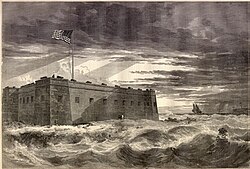
Fort Pickens is a pentagonal historic United States military fort on Santa Rosa Island in the Pensacola, Florida, area. It is named after American Revolutionary War hero Andrew Pickens. It is the largest of four forts built to defend Pensacola Bay and its navy yard. The fort was completed in 1834 and was one of the few forts in the South that remained in Union hands throughout the American Civil War. It remained in use until 1947. Fort Pickens is included within the Gulf Islands National Seashore, and as such, is administered by the National Park Service.

Fort McRee was a historic military fort constructed by the United States on the eastern tip of Perdido Key to defend Pensacola and its important natural harbor. In the defense of Pensacola Bay, Fort McRee was accompanied by Fort Pickens, located across Pensacola Pass on Santa Rosa Island, and Fort Barrancas, located across Pensacola Bay on the grounds of what is now Naval Air Station (NAS) Pensacola. Fort Pickens was the largest of these. Very little remains of Fort McRee today.

The Battle of Big Bethel was one of the earliest land battles of the American Civil War. It took place on the Virginia Peninsula, near Newport News, on June 10, 1861.
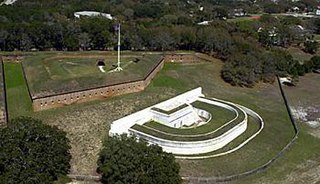
Fort Barrancas (1839) or Fort San Carlos de Barrancas is a United States military fort and National Historic Landmark in the former Warrington area of Pensacola, Florida, located physically within Naval Air Station Pensacola, which was developed later around it.

The Battle of Secessionville was fought on June 16, 1862, during the American Civil War. Confederate forces defeated the Union's only attempt to capture Charleston, South Carolina, by land. It's noted for the court martial of the Union Brig. Gen. Henry Benham for trying to take James Island, which was against the orders given.
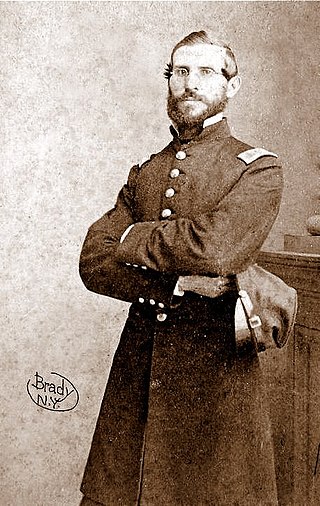
Adam Jacoby Slemmer was an officer in the United States Army during the Seminole Wars, the Old West, and the American Civil War.

The siege of Yorktown was the culminating act of the Yorktown campaign, a series of military operations occupying much of 1781 during the American Revolutionary War. The siege was a decisive Franco-American victory: after the surrender of British Lt. Gen. Charles, Earl Cornwallis on October 17, the government of Lord North fell, and its replacement entered into peace negotiations that resulted in British recognition of American independence with the 1783 Treaty of Paris.

The 6th New York Infantry Regiment, also called "Wilson's Zouaves", was a unit of the Union Army during the American Civil War. The first five companies, A, B, C, D and E, were organized in New York City on April 30, 1861. The next five companies, F, G, H, I, and K, were added May 25, 1861.
Galvanized Yankees was a term from the American Civil War denoting former Confederate prisoners of war who swore allegiance to the United States and joined the Union Army. Approximately 5,600 former Confederate soldiers enlisted in the United States Volunteers, organized into six regiments of infantry between January 1864 and November 1866. Of those, more than 250 had begun their service as Union soldiers, were captured in battle, then enlisted in prison to join a regiment of the Confederate States Army. They surrendered to Union forces in December 1864 and were held by the United States as deserters, but were saved from prosecution by being enlisted in the 5th and 6th U.S. Volunteers. An additional 800 former Confederates served in volunteer regiments raised by the states, forming ten companies. Four of those companies saw combat in the Western Theater against the Confederate Army, two served on the western frontier, and one became an independent company of U.S. Volunteers, serving in Minnesota.

The 10th Mississippi Infantry Regiment was a regiment of infantry in the Confederate States Army during the American Civil War. It fought in several campaigns and battles in the Western Theater.

Israel Vogdes was a soldier and military educator from Pennsylvania who served as a general in the Union Army during the American Civil War.
Charles DeWitt Anderson was an American soldier, railway builder, civil engineer, and lighthouse keeper. He served as an officer in the U.S. Army, and later as a Confederate officer during the American Civil War. Anderson was noted for his controversial surrender of Fort Gaines at the Battle of Mobile Bay in August 1864.
Hispanics in the American Civil War fought on both the Union and Confederate sides of the conflict. Not all the Hispanics who fought in the American Civil War were "Hispanic Americans" — in other words citizens of the United States. Many of them were Spanish subjects or nationals from countries in the Caribbean, Central and South America. Some were born in what later became a U.S. territory and therefore did not have the right to U.S. citizenship. It is estimated that approximately 3,500 Hispanics, mostly Mexican-Americans, Puerto Ricans and Cubans living in the United States joined the war: 2,500 for the Confederacy and 1,000 for the Union. This number increased to 10,000 by the end of the war.
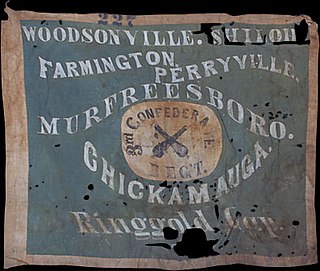
The 18th Arkansas Infantry (Marmaduke's) (1861–1865) was a Confederate Army infantry regiment during the American Civil War. The unit was also briefly identified as the 1st Arkansas Infantry Battalion. The unit was most often referred to as the 3rd Confederate Infantry Regiment. The designation "Confederate Infantry Regiment" was intended to convey the difference between Provisional Confederate Army units and Regular Confederate Army Units, with Provisional units being those regiments who received a state designation such as "XX Arkansas Infantry Regiment". In practice, the designation was most often utilized when Regiments were assembled utilizing companies from more than one Confederate state. The "3rd Confederate Infantry Regiment" is occasionally misidentified as the 3rd Arkansas Infantry Regiment commanded by Colonel Van H. Manning.
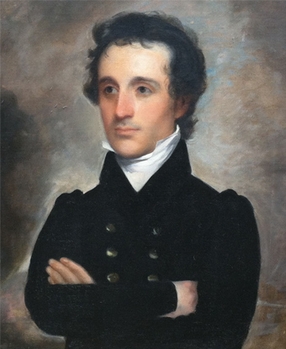
William Henry Chase was a Florida militia colonel during the events in early 1861 that led to the American Civil War. On January 15, 1861, on behalf of the State and Governor of Florida, Colonel Chase demanded the surrender of Fort Pickens at Pensacola, Florida and of its U.S. Army garrison. Chase had designed and constructed the fort while he was a captain in the United States Army Corps of Engineers. Lieutenant Adam J. Slemmer, commander of the fort, refused the surrender demand. An informal truce between the administration of President James Buchanan and Florida officials, including their still sitting U.S. Senators, avoided military action at Pensacola until after the Battle of Fort Sumter in April 1861.

The 1st Florida Infantry Regiment was an infantry regiment raised by the Confederate state of Florida during the American Civil War. Raised for 12 months of service its remaining veterans served in the 1st (McDonell's) Battalion, Florida Infantry from April 1862 on. In August the depleted battalion was consolidated with the 3rd (Miller's) Battalion into the reorganized 1st Florida Infantry Regiment again. In December 1862 it merged with the 3rd Florida Infantry Regiment and received the form it kept till the war's end as the 1st and 3rd Consolidated Florida Infantry Regiment. Fighting as part of the Army of Tennessee in the Western Theater of the American Civil War it was surrendered on April 26, 1865.

The 81st Infantry Division was a reserve division of the Philippine Army under the United States Army Forces in the Far East (USAFFE). It was established in the prewar period and fought 1941–1942. Its troops are from Cebu, Bohol, and Leyte but most of its troops are Americans and junior officers are Filipinos coming mostly from Luzon. The division served in defense of Mindanao but it never commanded the 4 of its maneuver regiments but was supplemented with 61st Infantry from Panay and 73rd Infantry from Negros. Also, 2nd Regular Regiment was transferred to its command in the early part of Japanese invasion of Mindanao.
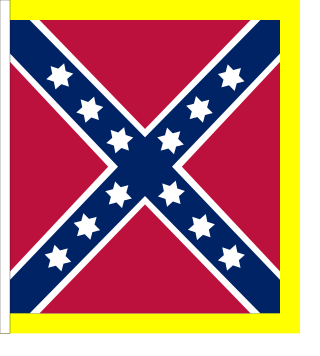
The 1st Louisiana Regulars Infantry Regiment, often referred to as the 1st Louisiana Infantry Regiment (Regulars), was an infantry regiment from Louisiana that served in the Confederate States Army during the American Civil War.

The 7th Alabama Infantry Regiment was a Confederate volunteer infantry regiment from Alabama during the American Civil War.
